Toshio Tsuji
Automated Classification of General Movements in Infants Using a Two-stream Spatiotemporal Fusion Network
Jul 04, 2022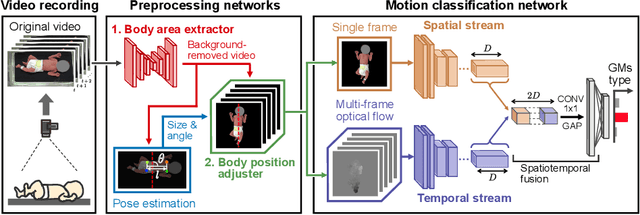
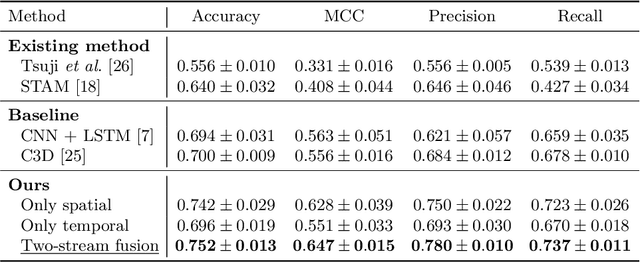
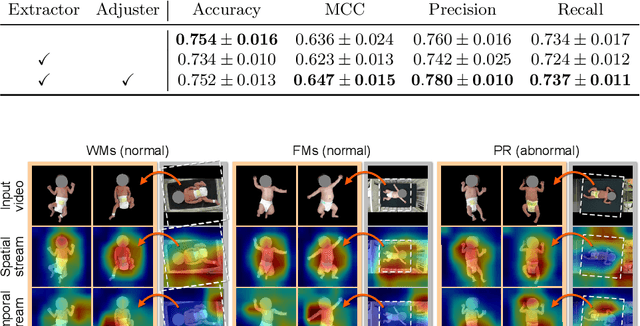
Abstract:The assessment of general movements (GMs) in infants is a useful tool in the early diagnosis of neurodevelopmental disorders. However, its evaluation in clinical practice relies on visual inspection by experts, and an automated solution is eagerly awaited. Recently, video-based GMs classification has attracted attention, but this approach would be strongly affected by irrelevant information, such as background clutter in the video. Furthermore, for reliability, it is necessary to properly extract the spatiotemporal features of infants during GMs. In this study, we propose an automated GMs classification method, which consists of preprocessing networks that remove unnecessary background information from GMs videos and adjust the infant's body position, and a subsequent motion classification network based on a two-stream structure. The proposed method can efficiently extract the essential spatiotemporal features for GMs classification while preventing overfitting to irrelevant information for different recording environments. We validated the proposed method using videos obtained from 100 infants. The experimental results demonstrate that the proposed method outperforms several baseline models and the existing methods.
A Time-Series Scale Mixture Model of EEG with a Hidden Markov Structure for Epileptic Seizure Detection
Nov 12, 2021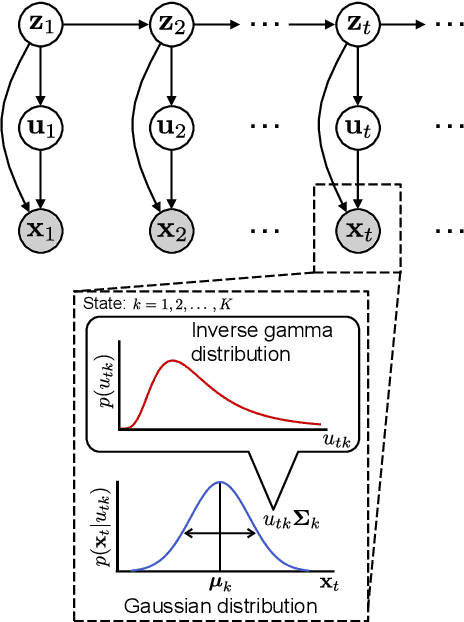
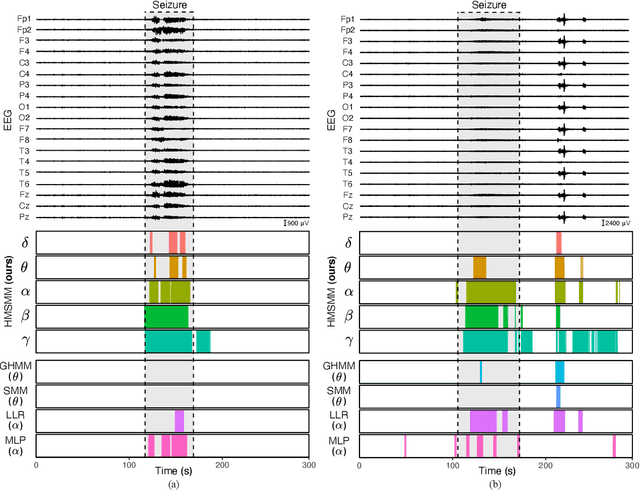
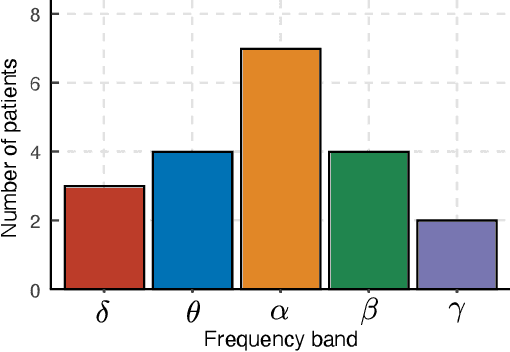
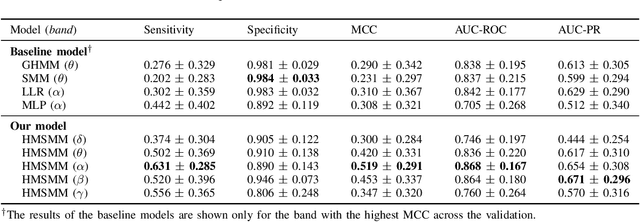
Abstract:In this paper, we propose a time-series stochastic model based on a scale mixture distribution with Markov transitions to detect epileptic seizures in electroencephalography (EEG). In the proposed model, an EEG signal at each time point is assumed to be a random variable following a Gaussian distribution. The covariance matrix of the Gaussian distribution is weighted with a latent scale parameter, which is also a random variable, resulting in the stochastic fluctuations of covariances. By introducing a latent state variable with a Markov chain in the background of this stochastic relationship, time-series changes in the distribution of latent scale parameters can be represented according to the state of epileptic seizures. In an experiment, we evaluated the performance of the proposed model for seizure detection using EEGs with multiple frequency bands decomposed from a clinical dataset. The results demonstrated that the proposed model can detect seizures with high sensitivity and outperformed several baselines.
EMG Pattern Recognition via Bayesian Inference with Scale Mixture-Based Stochastic Generative Models
Jul 21, 2021


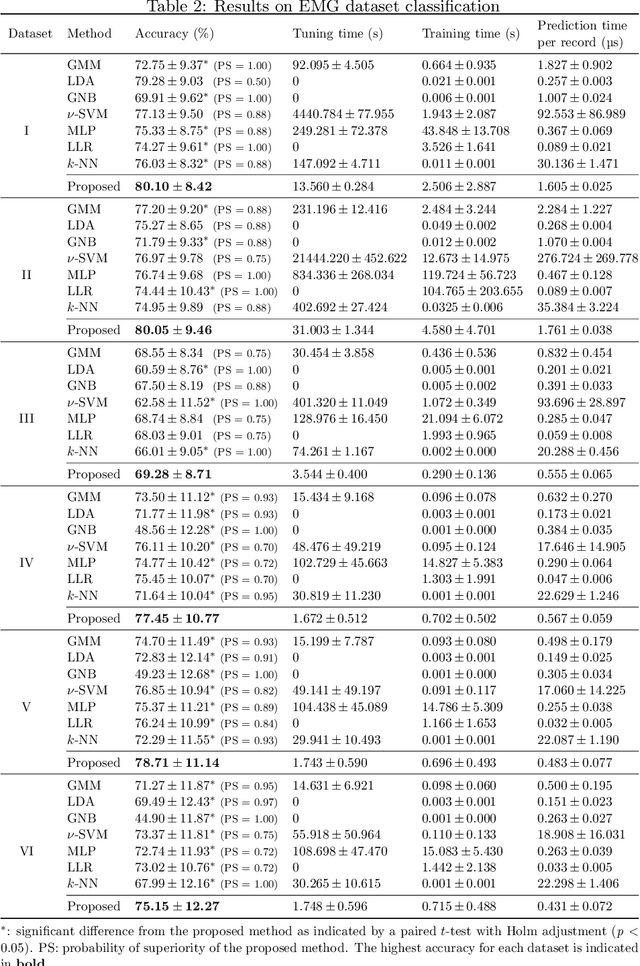
Abstract:Electromyogram (EMG) has been utilized to interface signals for prosthetic hands and information devices owing to its ability to reflect human motion intentions. Although various EMG classification methods have been introduced into EMG-based control systems, they do not fully consider the stochastic characteristics of EMG signals. This paper proposes an EMG pattern classification method incorporating a scale mixture-based generative model. A scale mixture model is a stochastic EMG model in which the EMG variance is considered as a random variable, enabling the representation of uncertainty in the variance. This model is extended in this study and utilized for EMG pattern classification. The proposed method is trained by variational Bayesian learning, thereby allowing the automatic determination of the model complexity. Furthermore, to optimize the hyperparameters of the proposed method with a partial discriminative approach, a mutual information-based determination method is introduced. Simulation and EMG analysis experiments demonstrated the relationship between the hyperparameters and classification accuracy of the proposed method as well as the validity of the proposed method. The comparison using public EMG datasets revealed that the proposed method outperformed the various conventional classifiers. These results indicated the validity of the proposed method and its applicability to EMG-based control systems. In EMG pattern recognition, a classifier based on a generative model that reflects the stochastic characteristics of EMG signals can outperform the conventional general-purpose classifier.
Biomimetic Control of Myoelectric Prosthetic Hand Based on a Lambda-type Muscle Model
May 29, 2021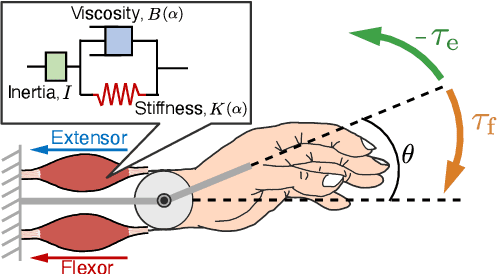
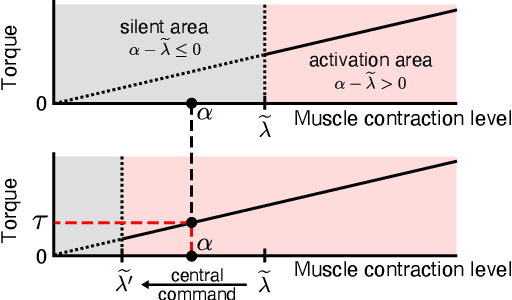
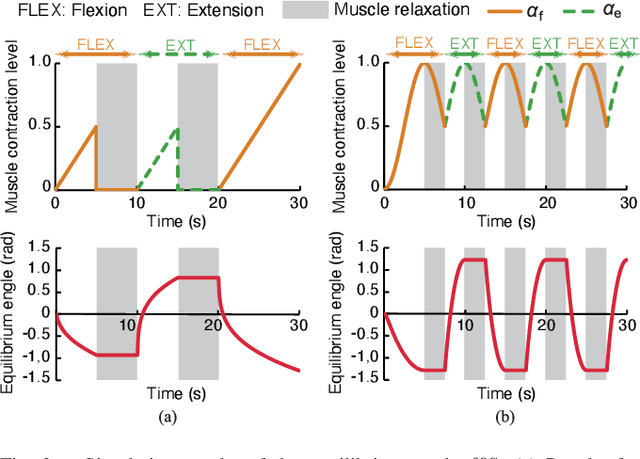
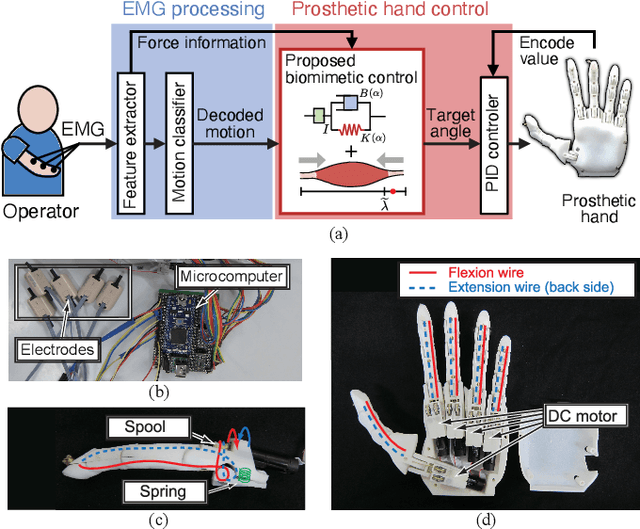
Abstract:Myoelectric prosthetic hands are intended to replace the function of the amputee's lost arm. Therefore, developing robotic prosthetics that can mimic not only the appearance and functionality of humans but also characteristics unique to human movements is paramount. Although the impedance model was proposed to realize biomimetic control, this model cannot replicate the characteristics of human movements effectively because the joint angle always converges to the equilibrium position during muscle relaxation. This paper proposes a novel biomimetic control method for myoelectric prosthetic hands integrating the impedance model with the concept of the $\lambda$-type muscle model. The proposed method can dynamically control the joint equilibrium position, according to the state of the muscle, and can maintain the joint angle naturally during muscle relaxation. The effectiveness of the proposed method is evaluated through simulations and a series of experiments on non-amputee participants. The experimental results, based on comparison with the actual human joint angles, suggest that the proposed method has a better correlation with the actual human motion than the conventional methods. Additionally, the control experiments showed that the proposed method could achieve a natural prosthetic hand movement similar to that of a human, thereby allowing voluntary hand opening and closing movements.
A Neural Network Based on the Johnson $S_\mathrm{U}$ Translation System and Related Application to Electromyogram Classification
Nov 14, 2019



Abstract:Electromyogram (EMG) classification is a key technique in EMG-based control systems. The existing EMG classification methods do not consider the characteristics of EMG features that the distribution has skewness and kurtosis, causing drawbacks such as the requirement of hyperparameter tuning. In this paper, we propose a neural network based on the Johnson $S_\mathrm{U}$ translation system that is capable of representing distributions with skewness and kurtosis. The Johnson system is a normalizing translation that transforms non-normal data to a normal distribution, thereby enabling the representation of a wide range of distributions. In this study, a discriminative model based on the multivariate Johnson $S_\mathrm{U}$ translation system is transformed into a linear combination of coefficients and input vectors using log-linearization. This is then incorporated into a neural network structure, thereby allowing the calculation of the posterior probability of the input vectors for each class and the determination of model parameters as weight coefficients of the network. The uniqueness of convergence of the network learning is theoretically guaranteed. In the experiments, the suitability of the proposed network for distributions including skewness and kurtosis is evaluated using artificially generated data. Its applicability for real biological data is also evaluated via an EMG classification experiment. The results show that the proposed network achieves high classification performance without the need for hyperparameter optimization.
A Recurrent Probabilistic Neural Network with Dimensionality Reduction Based on Time-series Discriminant Component Analysis
Nov 14, 2019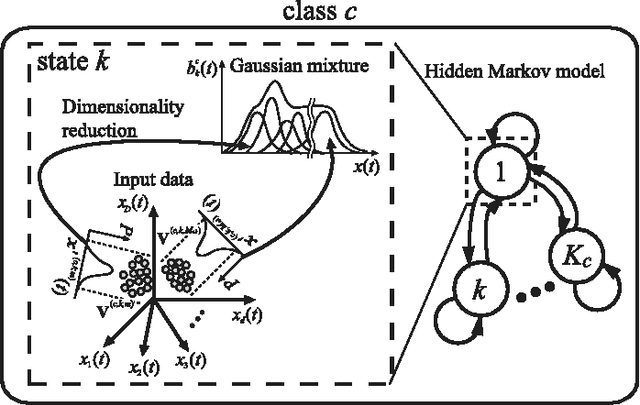
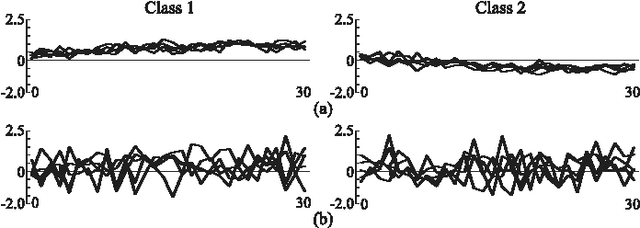
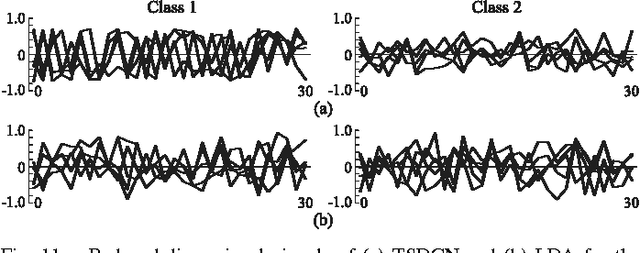

Abstract:This paper proposes a probabilistic neural network developed on the basis of time-series discriminant component analysis (TSDCA) that can be used to classify high-dimensional time-series patterns. TSDCA involves the compression of high-dimensional time series into a lower-dimensional space using a set of orthogonal transformations and the calculation of posterior probabilities based on a continuous-density hidden Markov model with a Gaussian mixture model expressed in the reduced-dimensional space. The analysis can be incorporated into a neural network, which is named a time-series discriminant component network (TSDCN), so that parameters of dimensionality reduction and classification can be obtained simultaneously as network coefficients according to a backpropagation through time-based learning algorithm with the Lagrange multiplier method. The TSDCN is considered to enable high-accuracy classification of high-dimensional time-series patterns and to reduce the computation time taken for network training. The validity of the TSDCN is demonstrated for high-dimensional artificial data and EEG signals in the experiments conducted during the study.
* Published in IEEE Transactions on Neural Networks and Learning Systems
 Add to Chrome
Add to Chrome Add to Firefox
Add to Firefox Add to Edge
Add to Edge